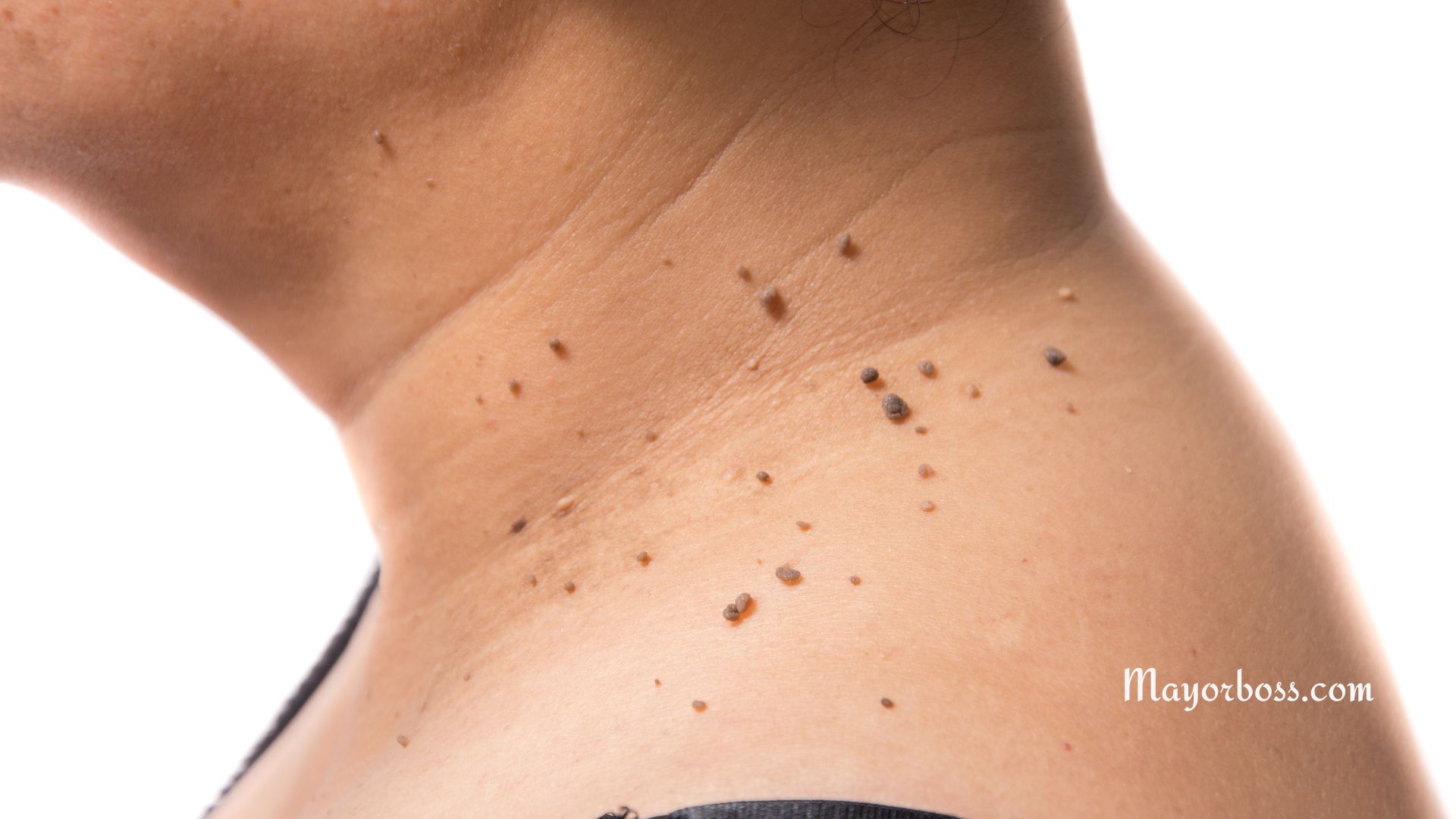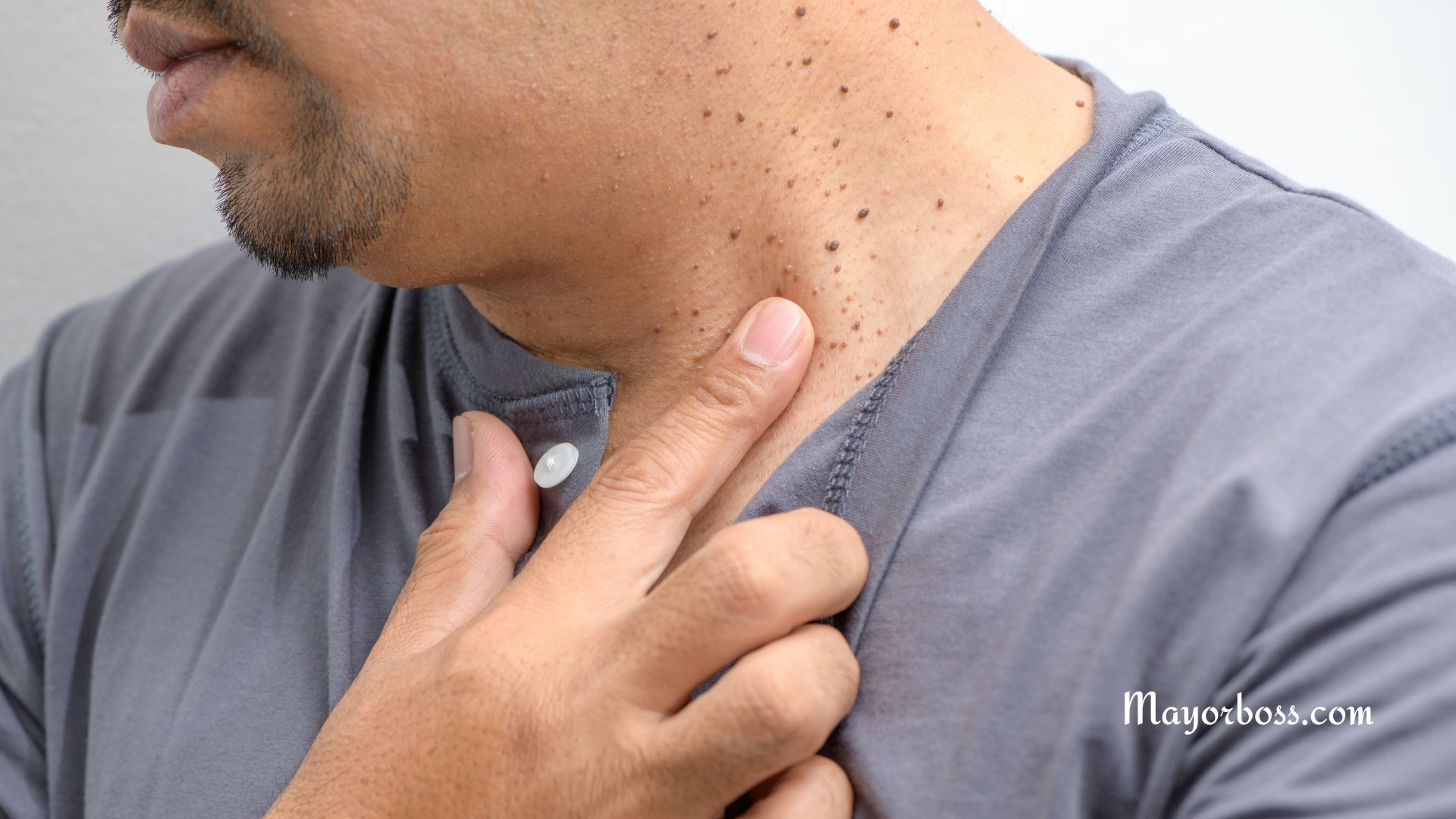How to Get Rid of Skin Tags
Skin tags are those small, soft, and harmless growths that often appear on your neck, armpits, eyelids, or other parts of the body. While they usually aren’t painful, many people find them annoying or uncomfortable, especially if they get irritated by clothing or jewelry. Well, there are several ways to safely remove skin tags if they are bothering you.

What Are Skin Tags and Why Do They Form?
Skin tags, scientifically known as acrochordons, are made up of collagen fibers, nerve cells, fat cells, and small blood vessels, all covered by skin. Typically, they develop in areas where the skin frequently rubs against itself, which explains why they are so common in places like the neck, armpits, and groin.
Most people will experience skin tags at some point in their life. While anyone can develop them, they are more common in individuals who are overweight, have diabetes, or have family members with similar growths. Hormonal changes, such as those that happen during pregnancy, can also trigger the appearance of skin tags.
Can You Remove Skin Tags at Home?
You may be tempted to try removing skin tags at home, and it’s true that there are a few home remedies people swear by. However, before glancing into home methods, it’s important to understand that these growths are still part of your skin, and improper removal could lead to irritation or even infection.
Home Remedies You Could Try (With Caution)
- Dental Floss or String Tying: Some people use dental floss or thread to tie the base of the skin tag tightly. The idea is to cut off the blood supply, causing the tag to eventually fall off. This method may work, but it can be painful and carries a risk of infection if not done properly.
- Apple Cider Vinegar: Applying apple cider vinegar to a skin tag has been suggested as a natural remedy. You simply soak a cotton ball with vinegar, apply it to the tag, and leave it on for a few minutes daily until the tag darkens and falls off. Keep in mind that apple cider vinegar can be irritating, especially for those with sensitive skin.
- Tea Tree Oil: Tea tree oil is another popular remedy. It is thought to dry out the skin tag over time. Apply the oil to the tag with a cotton ball and leave it on for about ten minutes each day. Again, this method can take some time, and it’s best to be careful with sensitive skin.
Why a Doctor’s Visit Might Be Your Best Bet
Although home remedies may seem convenient, the safest way to remove a skin tag is by visiting your doctor or dermatologist. A trained medical professional can remove skin tags quickly and safely without the risk of scarring or infection. Here are a few common in-office procedures:
- Cryotherapy: This involves freezing the skin tag using liquid nitrogen. After a few days, the frozen tag will fall off. This method is quick and relatively painless, though some people may feel a cold or stinging sensation.
- Electrocautery: This method uses an electric current to burn off the skin tag. It’s effective and typically requires just one session. The doctor will numb the area first, making this an easy and painless procedure.
- Surgical Excision: In this method, the doctor uses a sterile surgical blade or scissors to remove the tag. This is very effective for larger tags, and the doctor can ensure that no part of the tag is left behind.
Should You Worry About Skin Tags?
The good news is that skin tags are almost always harmless. However, there are some cases when you should talk to your doctor before attempting to remove one:
- Size or Appearance Changes: If your skin tag suddenly changes in size, shape, or color, it’s best to have it checked by a doctor to rule out any serious conditions.
- Pain or Bleeding: If a skin tag becomes painful, bleeds, or gets infected, it needs medical attention. Don’t attempt to remove it yourself under these conditions.
Preventing Skin Tags
While you may not be able to prevent skin tags completely, reducing skin friction can help minimize their occurrence. Here are some tips:
- Maintain a Healthy Weight: Reducing skin folds can help prevent tags from forming in areas prone to friction.
- Keep Skin Dry: Moist areas are more likely to develop skin tags. Make sure to dry off thoroughly after bathing, especially in skin folds.
- Wear Comfortable Clothing: Avoid tight clothing that rubs against the skin, particularly around the neck and underarms, which are common areas for skin tags.
Final Thoughts on Skin Tag Removal
Skin tags are not dangerous, but they can be annoying. While some home remedies might seem tempting, the best option for removal is typically a quick trip to your doctor. They can remove the tags safely and help you avoid any complications like scarring or infection. If you ever notice a skin tag changing or if it causes discomfort, don’t hesitate to reach out to a medical professional for advice.
Whether you decide on a home remedy or a medical procedure, it’s always wise to weigh the pros and cons, especially when it comes to your skin’s health. After all, a healthy, scar-free result is what everyone hopes for.






